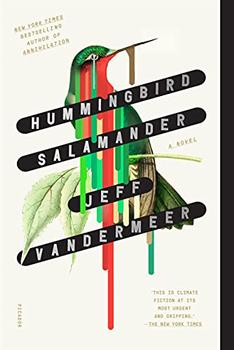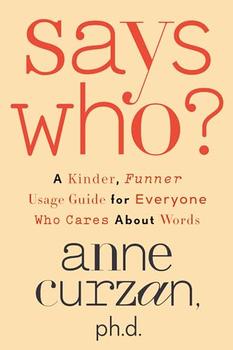Summary | Excerpt | Reviews | Beyond the Book | Read-Alikes | Genres & Themes | Author Bio

Critics' Opinion:
Readers' Opinion:
First Published:
Apr 2021, 368 pages
Paperback:
Apr 2022, 384 pages
 Book Reviewed by:
Book Reviewed by:
Daniela Schofield
Buy This Book
This article relates to Hummingbird Salamander
 In Hummingbird Salamander by Jeff VanderMeer, the main character is left a taxidermied hummingbird as a clue. Early on in the book, it is revealed that this hummingbird belongs to a now-extinct species; wildlife trafficking and environmental degradation both become themes of the novel.
In Hummingbird Salamander by Jeff VanderMeer, the main character is left a taxidermied hummingbird as a clue. Early on in the book, it is revealed that this hummingbird belongs to a now-extinct species; wildlife trafficking and environmental degradation both become themes of the novel.
Although poaching and wildlife trafficking in Latin America have not always received as much attention as those phenomena in other parts of the world, and the term "endangered species" is often more commonly associated with animals in Africa or Asia, recent reports indicate that exploitation of animals in the area risks pushing its species toward extinction.
Latin America is one of the most biodiverse areas on Earth and home to approximately 60% of terrestrial life (land-based plant and animal species) on the planet. Wildlife trafficking, one threat to the ecosystems that host this life, is fueled by greater connectivity to global markets, growing physical infrastructure — such as public roads — and increased internet connectivity, which facilitates sales of trafficked animals online.
The illegal trade of wildlife in Latin America, including the transport of both living and dead animals, is now a multibillion-dollar enterprise. Animals from across the region are sought after to fulfill a wide variety of demands. Skins of crocodiles and other reptiles found in Mexico are used in making accessories, fangs from jaguars — often found in the Amazon basin — are prized in forms of traditional medicine, and turtles from Peru are trafficked into the exotic pet market. Other animals trafficked from Latin America include monkeys, large rodents (such as capybara), ungulates (such as deer and tapirs), exotic birds, armadillos, and even fish and marine life.
Trafficking of animals is concerning not only for the survival of particular species but for biodiversity as a whole. Damage to one species can have severe impacts on other species and the wider environment. For example, the jaguar is an apex predator that is critical to controlling the populations of other animals and plays an important role in keeping the forest ecosystem healthy and balanced. While jaguars could once be found as far north as the area that is now the southern United States, their habitat today is largely the Amazon basin, and their existence is increasingly under threat. Between 2012 and 2018, the number of jaguars trafficked or poached increased 200-fold. This uptick threatens to undermine years of conservation work and destroy the balance of the Amazonian ecosystem.
While exact figures showing the overall increase in wildlife trafficking in Latin America are difficult to confirm due to the illegal nature of trafficking, forestry and wildlife experts are aware of the rise in the removal of animals, and figures around confiscations by authorities can give some indication of the current magnitude of the issue. Between 2000 and 2017, over 79,000 animal specimens were confiscated from Peru alone, and millions of animals are trafficked within and out of Brazil annually. The potential economic gain from trafficking, along with socio-political issues such as poverty and lack of employment, can be an incentive for people to get involved in the illegal animal trade. Another enabling factor for animal trafficking is a lack of law enforcement dealing with wildlife crime.
In addition to the immediate threat trafficking poses to the survival of species and delicate ecosystems, the practice also threatens human safety and well-being. Wildlife trafficking brings people into closer contact with wild animals, increasing the chances of transmission of diseases from animals to humans.
Jaguar in Brazil, by Charles J. Sharp (CC BY-SA 4.0)
Filed under Nature and the Environment
![]() This "beyond the book article" relates to Hummingbird Salamander. It originally ran in April 2021 and has been updated for the
April 2022 paperback edition.
Go to magazine.
This "beyond the book article" relates to Hummingbird Salamander. It originally ran in April 2021 and has been updated for the
April 2022 paperback edition.
Go to magazine.




What really knocks me out is a book that, when you're all done reading, you wish the author that wrote it was a ...
Click Here to find out who said this, as well as discovering other famous literary quotes!
Your guide toexceptional books
BookBrowse seeks out and recommends the best in contemporary fiction and nonfiction—books that not only engage and entertain but also deepen our understanding of ourselves and the world around us.